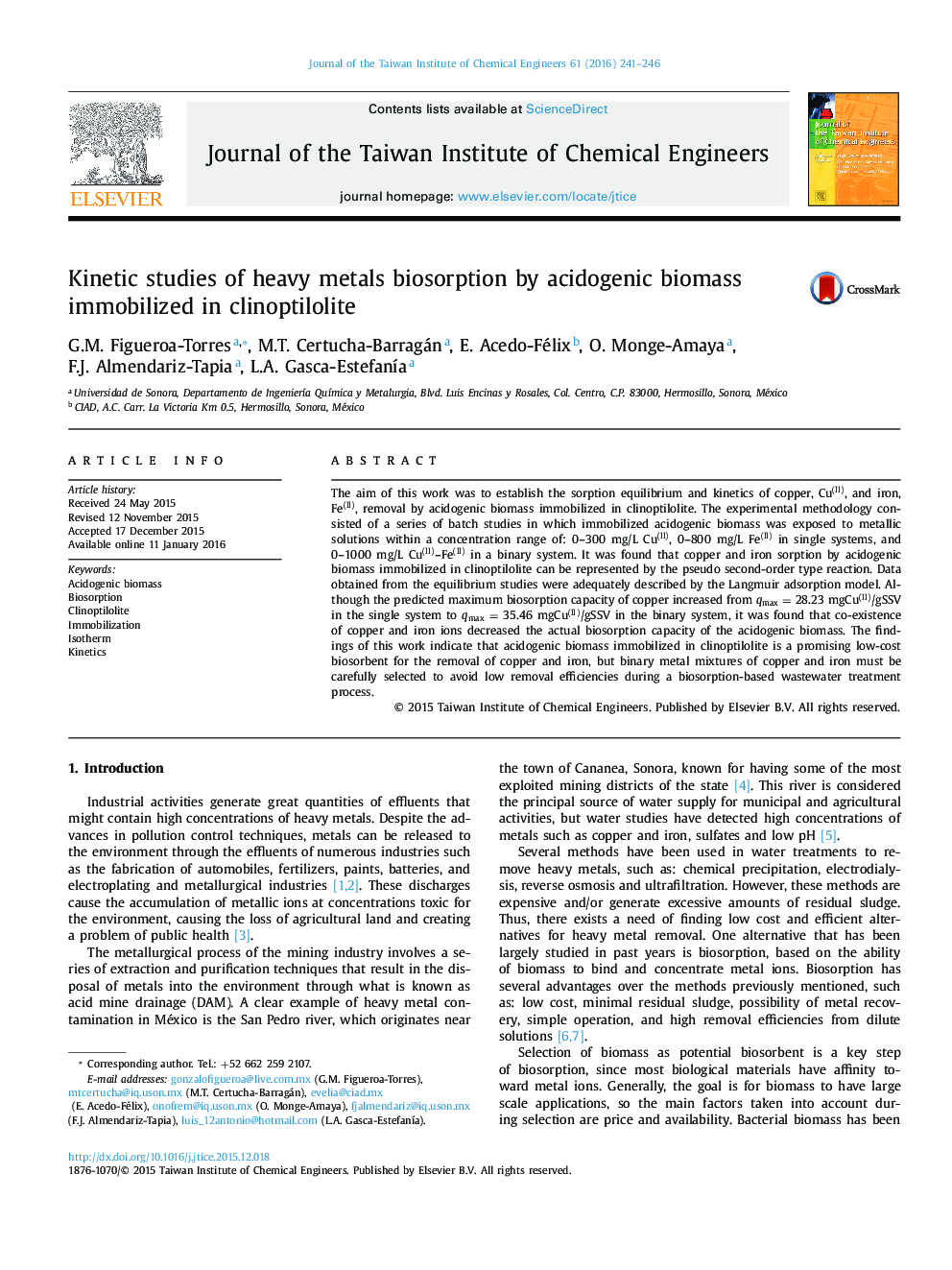| Article ID | Journal | Published Year | Pages | File Type |
|---|---|---|---|---|
| 690364 | Journal of the Taiwan Institute of Chemical Engineers | 2016 | 6 Pages |
•Copper and iron biosorption by acidogenic biomass immobilized in clinoptilolite can be represented by pseudo second-order reaction type kinetics.•The biosorption of copper and iron by acidogenic biomass is well predicted by the Langmuir isotherm model.•Biosorption of copper and iron is favored in single system. The biosorption capacity of both copper and iron ions was reduced in the binary system when compared to the single system, indicating that there exists competition for the active sites.•Acidogenic biomass immobilized in clinoptilolite can be used as a promising low-cost biosorbent in wastewater treatments.
The aim of this work was to establish the sorption equilibrium and kinetics of copper, Cu(II), and iron, Fe(II), removal by acidogenic biomass immobilized in clinoptilolite. The experimental methodology consisted of a series of batch studies in which immobilized acidogenic biomass was exposed to metallic solutions within a concentration range of: 0–300 mg/L Cu(II), 0–800 mg/L Fe(II) in single systems, and 0–1000 mg/L Cu(II)–Fe(II) in a binary system. It was found that copper and iron sorption by acidogenic biomass immobilized in clinoptilolite can be represented by the pseudo second-order type reaction. Data obtained from the equilibrium studies were adequately described by the Langmuir adsorption model. Although the predicted maximum biosorption capacity of copper increased from qmax = 28.23 mgCu(II)/gSSV in the single system to qmax = 35.46 mgCu(II)/gSSV in the binary system, it was found that co-existence of copper and iron ions decreased the actual biosorption capacity of the acidogenic biomass. The findings of this work indicate that acidogenic biomass immobilized in clinoptilolite is a promising low-cost biosorbent for the removal of copper and iron, but binary metal mixtures of copper and iron must be carefully selected to avoid low removal efficiencies during a biosorption-based wastewater treatment process.
Graphical abstract Figure optionsDownload full-size imageDownload as PowerPoint slide
